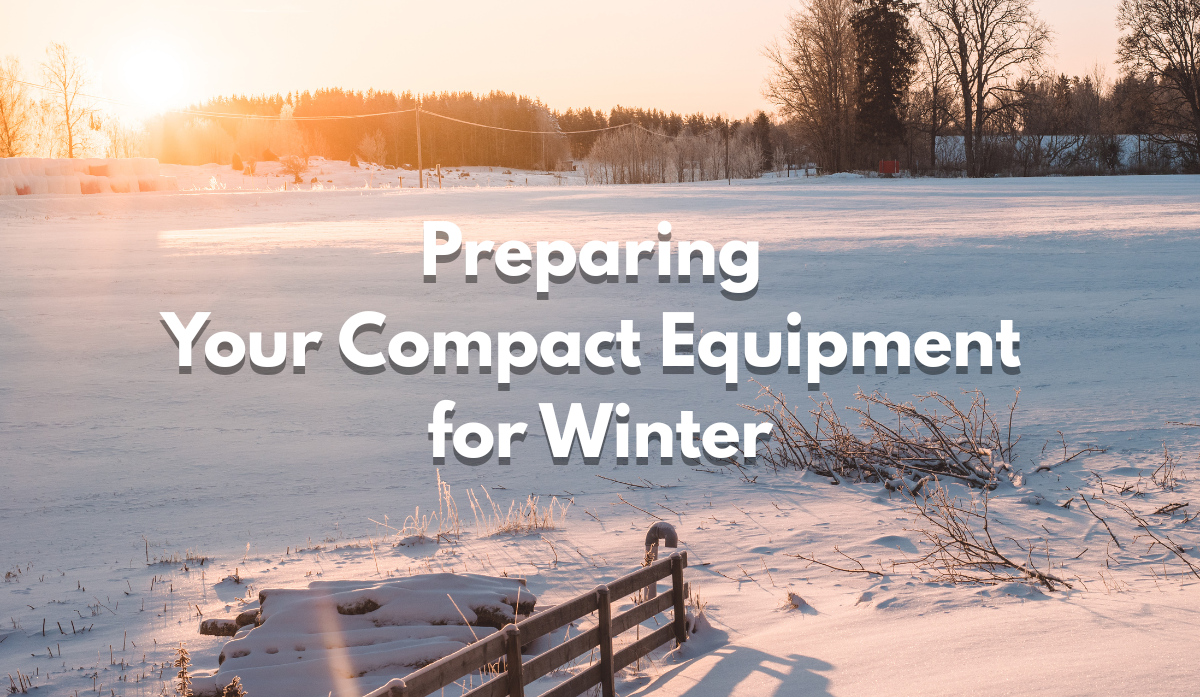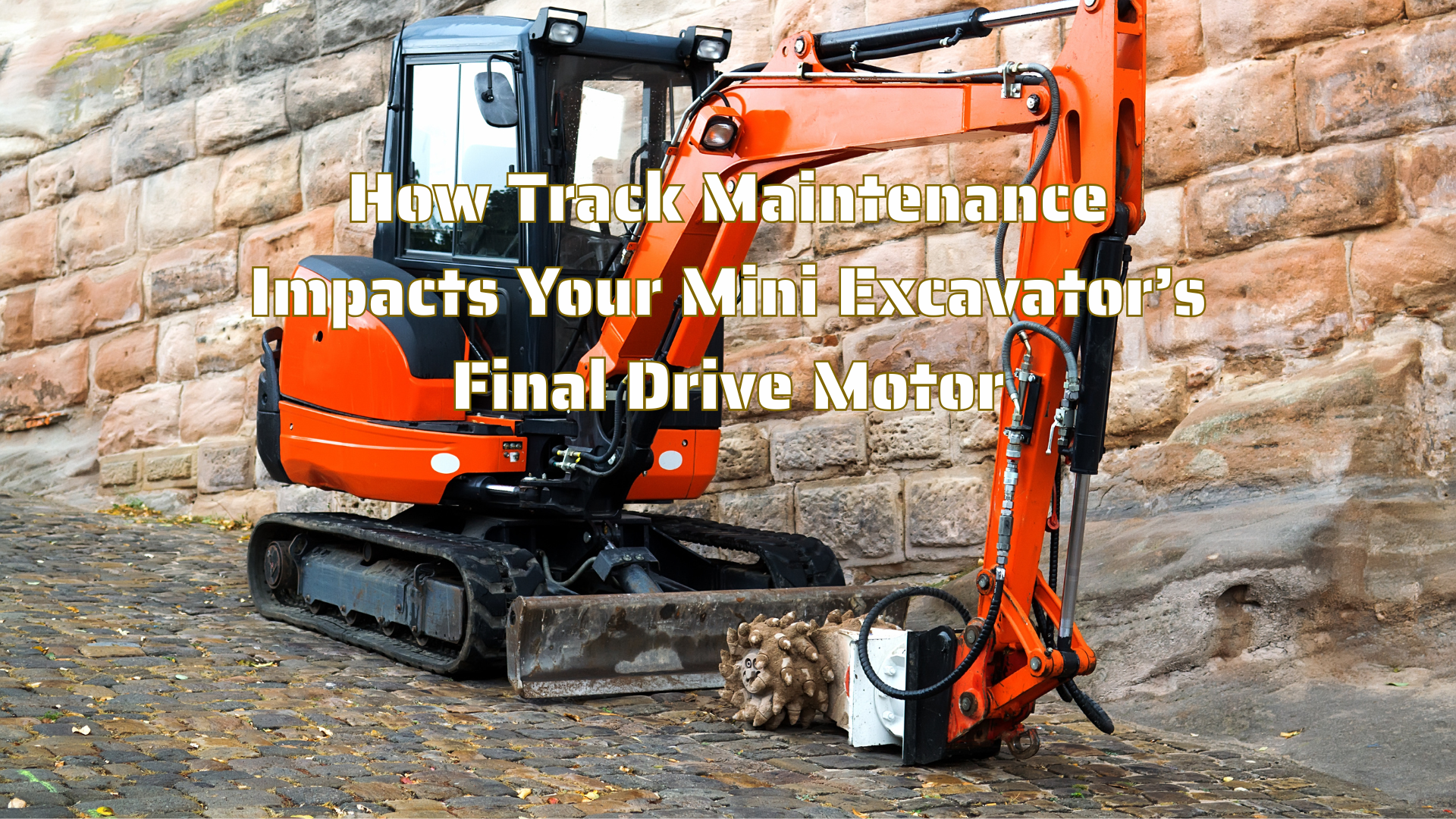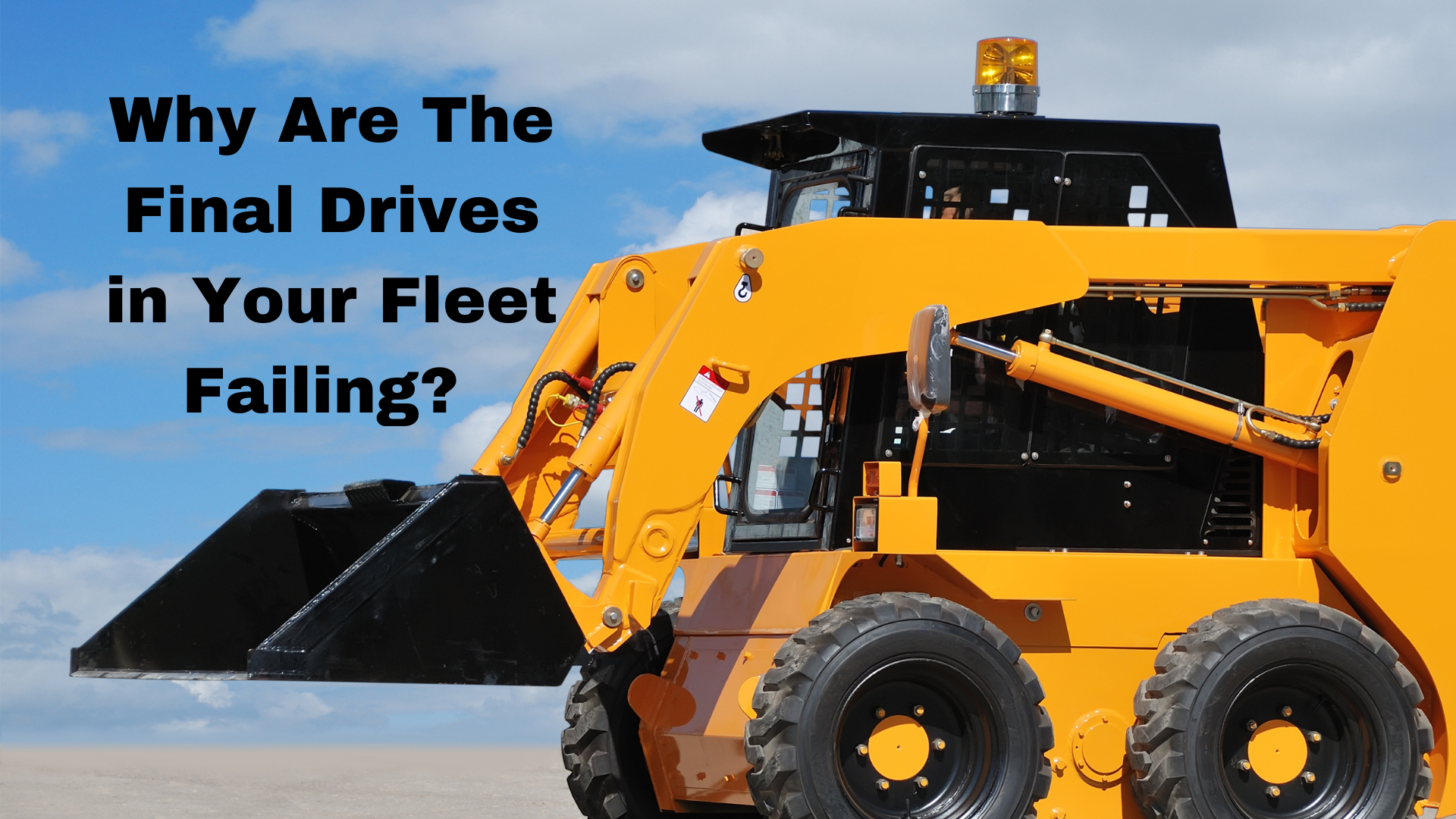Hydraulic Cavitation: What It Is, What Causes It, and How to Fight Back
Posted by Dr. Sara McCaslin on Apr 6th 2025
That Whining Noise Might Be Warning You…
You're out on the job, pushing through a tight schedule, when your compact equipment starts making a really strange, high-pitched whine. Maybe your CTL or mini excavator is losing power, running hotter than usual, or the performance just isn’t up to par. We know it’s tempting to chalk it up to wear and tear and move on … but what if the real problem is something you can catch early and fix before it wrecks your final drive?
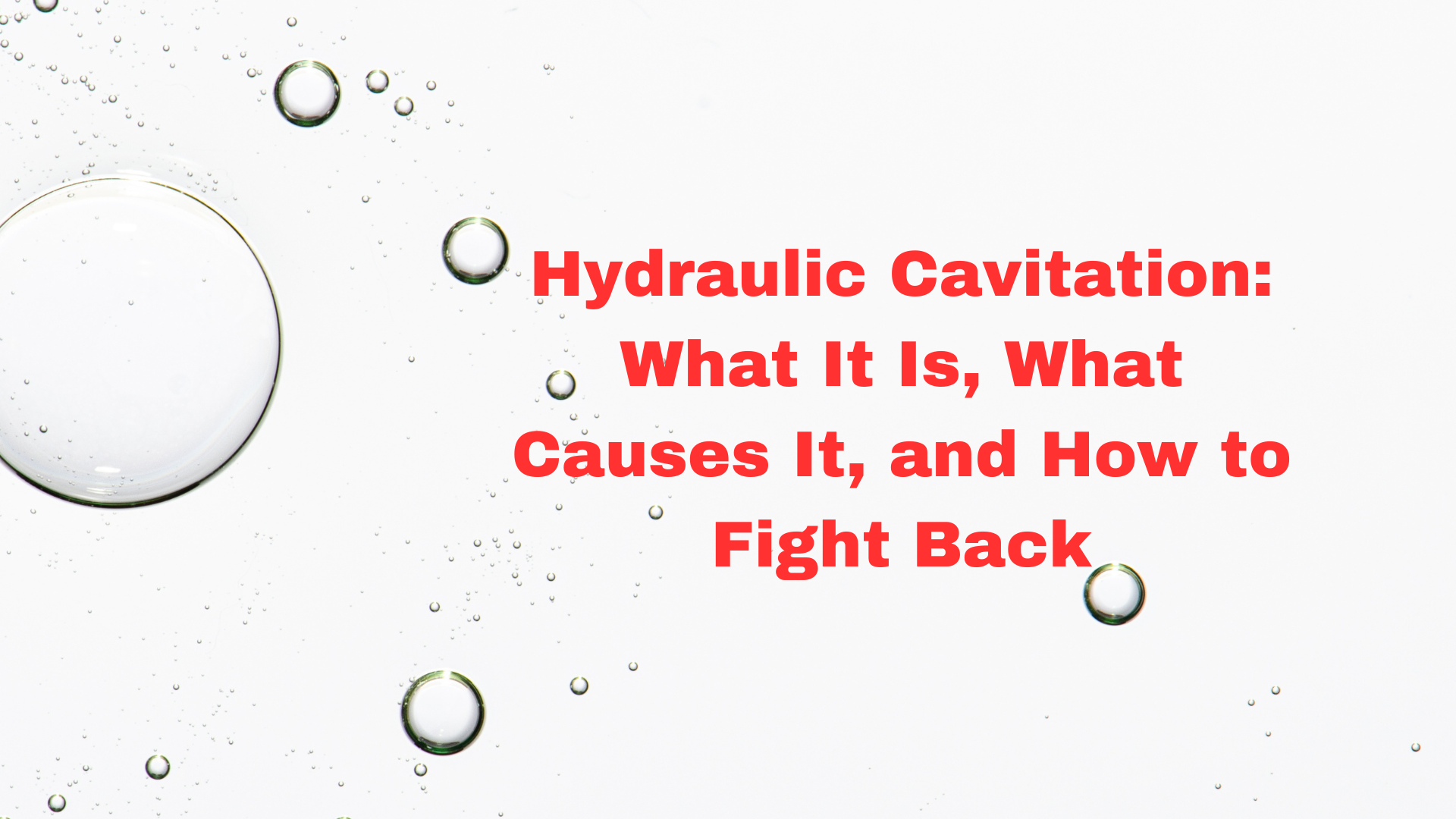
That problem could be cavitation—a hidden hydraulic issue that causes severe internal damage long before you see visible signs. Left unchecked, it can chew through seals, bearings, and precision surfaces, leading to costly repairs and unexpected downtime.
In this Shop Talk Blog post, we break down exactly what cavitation is, what causes it, how to spot the symptoms, and—most importantly—how to prevent it from taking out your final drive motor. Whether you're troubleshooting a current issue or looking to protect your equipment for the long haul, our article will help you keep your machine running strong and your project schedule on track.
What Is Cavitation?
Cavitation is a serious issue in hydraulic systems, particularly components like final drive motors. It occurs when vapor bubbles form in the hydraulic fluid because of sudden pressure drops. These bubbles may appear insignificant to the naked eye, but they release intense localized energy when they collapse (or implode). Over time, this repeated implosion will cause significant internal damage, including pitting on metal surfaces, erosion of components, and overall system degradation. It can wreck a final drive motor.
Simply put, cavitation is like a hidden form of wear that attacks your equipment from the inside. Imagine running a pneumatic nailer with no nails in the chamber. It fires, but instead of driving a nail, that sudden burst of air slams into an empty space—and over time, that repeated force wears out the tool’s internal components. It’s the same with cavitation: when your hydraulic system doesn’t have enough clean, pressurized fluid, vapor bubbles take the place of that pressure, and every time they collapse, it’s like a mini dry-fire—hammering away at your final drive from the inside out.
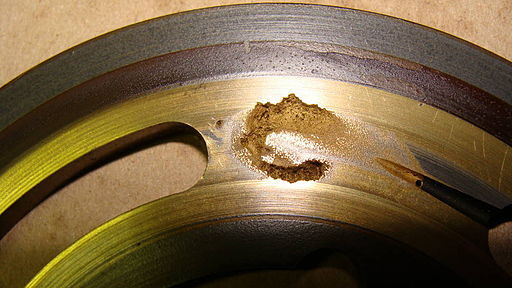
By hydro-tg hydraulique [GFDL or CC-BY-SA-3.0], via Wikimedia Commons
When hydraulic fluid is low, contaminated, or unable to circulate correctly due to restrictions, pressure in the system can fluctuate. This creates conditions where fluid vaporizes momentarily, forming those damaging bubbles. As the fluid moves into higher-pressure zones, the bubbles collapse with enough force to damage seals, bearings, and internal surfaces. If left unaddressed, cavitation can lead to decreased performance, increased heat, and eventually, complete failure of the final drive motor.
What Causes Cavitation in Final Drives?
Cavitation is caused by pressure imbalances in a hydraulic system. Still, those imbalances often stem from a handful of common, preventable issues—especially in hardworking machines like skid steers and mini excavators. One of the most frequent culprits is low hydraulic fluid levels. When fluid runs low, air can enter the system, disrupting pressure and allowing vapor bubbles to form. This is especially dangerous because cavitation doesn’t take long to start causing damage once those air pockets are in motion.
Contaminated hydraulic fluid is another major factor. Dirt, water, or even air trapped in the system can interfere with pressure regulation and fluid flow. Contaminants can also clog filters and narrow flow passages, increasing the chances of pressure drops that lead to cavitation. Using the wrong type of hydraulic oil—or failing to replace old, degraded fluid—can have a similar effect, making the system more vulnerable to vapor bubble formation.
Clogged or restricted filters, hoses, or suction lines are common contributors. When the pump can’t draw in enough clean fluid fast enough, it creates a vacuum effect, lowering the pressure and encouraging cavitation. And while it might not seem obvious, running a machine hard without warming it up—especially in colder temperatures—can increase fluid viscosity and reduce flow, again setting the stage for cavitation.
Ultimately, anything that disrupts the smooth, pressurized flow of clean hydraulic fluid through your system can open the door to cavitation. The good news is that many of these causes are preventable with regular maintenance and a few smart operating habits.
Symptoms of Cavitation
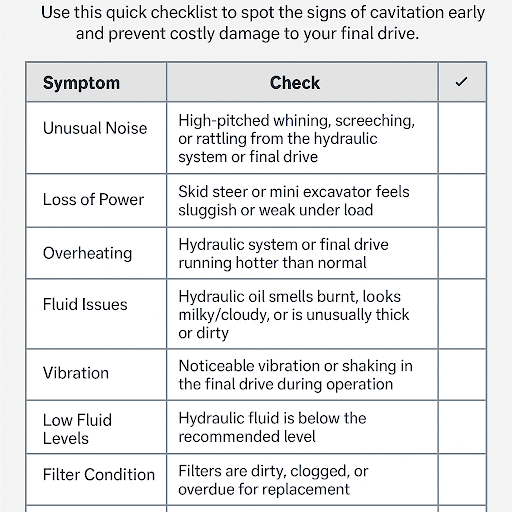
Cavitation isn’t always obvious at first, but your machine will start giving you clues that something’s not right. One of the most common symptoms is a high-pitched whining or screeching noise from the hydraulic system or final drive motor. This sound is often caused by vapor bubbles collapsing inside the system, and it’s a clear signal that fluid flow and pressure aren’t where they should be.
Another early warning sign is sluggish or inconsistent machine performance. Cavitation could disrupt the hydraulic motor's ability to transfer power efficiently if your skid steer feels underpowered, slow to respond, or struggles under load. Over time, this lack of power can progress to complete drive failure if the issue isn’t addressed.
You might also notice your hydraulic system running hotter than usual. Cavitation reduces fluid flow efficiency and creates additional friction within the motor, which can lead to overheating. In some cases, the hydraulic fluid itself may show signs of distress—such as a burnt smell, cloudy appearance, or milky texture, all of which point to contamination or the presence of air in the system.
Finally, unusual vibrations or rattling noises coming from the final drive motor may suggest that cavitation has already started to cause internal damage. If you notice any of these symptoms, it’s essential to inspect your hydraulic system right away to prevent further wear and costly repairs.
How Cavitation Damages Your Final Drive
While cavitation starts at the microscopic level, its effects build up quickly—and the damage it causes is anything but small. Each time a vapor bubble collapses inside your hydraulic system, it creates a sharp, high-pressure shockwave. These repeated micro-impacts chip away at the internal surfaces of your final drive motor, leading to pitting, scoring, and erosion of metal components. Over time, this physical wear compromises the precision fit and smooth operation required for efficient performance.

Internal surfaces wear down creating an expernsive and sometimes catastrophic domino effect: bearings and seals start to fail under the added stress, allowing damaging contaminants to enter the hydraulic system. The wear releases bits of metal that contribute to abrasive contamination. The contamination will speed up fluid degradation and increase the likelihood of complicating issues like overheating, creating even more ideal conditions for cavitation. The result? A cycle of damage that reduces power output, makes your equipment less responsive, and can cause a catastrophic failure of a final drive motor.
One of the more frustrating aspects of cavitation damage is that it can be mistaken for other types of wear or mechanical failure—until it’s too late. Once enough internal damage has occurred, the only solution left may be a complete rebuild or replacement of the final drive. The internal nature of cavitation damage is why identifying symptoms early and correcting the root causes is critical for keeping your equipment operational and extending the life of your final drive.
How to Prevent Cavitation in Your Final Drive
There is some good news about cavitation: it’s almost always preventable. With the right maintenance routine and a few good habits, the risk of cavitation-related damage can be reduced,
Start with the basics: Always check your hydraulic fluid levels before starting work. Low fluid is one of the leading causes of cavitation, and it’s also one of the easiest to catch early. inspect levels, top off as needed, and look for signs of contamination—like cloudy fluid or a burnt smell--as a part of your daily work routine.
Prioritize cleanliness and proper filtration. Replace hydraulic filters at the manufacturer’s recommended intervals (or sooner if you're working in dirty or dusty environments), and that includese case drain filters if the equipment has them. Always remember that clogged or old filters can restrict fluid flow, which then creates the pressure drops leading to vapor bubble formation. It’s also crucial to keep fill ports, dipsticks, and reservoirs clean during service to prevent debris from entering the system.
Always use the correct type and viscosity fluid for your specific machine and operating conditions. Using old, degraded, or the wrong fluid can reduce flow efficiency and increase the risk of cavitation. This is especially true in colder climates where oil thickens. Always consult your equipment manual or supplier if you’re unsure which oil to use.
Let your equipment warm up before going full throttle, especially in cold weather. Cold hydraulic oil takes longer to circulate and can trigger cavitation if the system is forced to work before it’s ready. Giving your machine a few minutes to reach operating temperature protects both the fluid and the components inside the final drive.
Keep an eye on performance changes and system behavior. If your machine starts sounding different, loses power, or runs hotter than usual, investigate immediately. Catching problems early can make all the the difference between a quick fix and a complete motor replacement.
Conclusion: Catch Cavitation Before It Wrecks Your Final Drive
Cavitation may start small, but if left unchecked, it can cause severe damage to your final drive—and lead to costly repairs or even full replacement. The key is catching and preventing it early through smart maintenance: keeping your hydraulic fluid clean and topped off, replacing filters on schedule, using the right oil, and warming up your equipment properly. These simple steps go a long way toward protecting your equipment and keeping your job site moving.
If you think your final drive might be showing signs of cavitation—or if you just want a second opinion—don’t wait. Give us a call at (877) 781-9820. The experts at Final Drive Parts / Texas Final Drive can help you diagnose the issue and guide you toward the right repair or replacement options.
Ready to shop for high-quality new and reman final drives? Check out our massive inventiry of final drive motors and components here: Shop All Final Drives.


